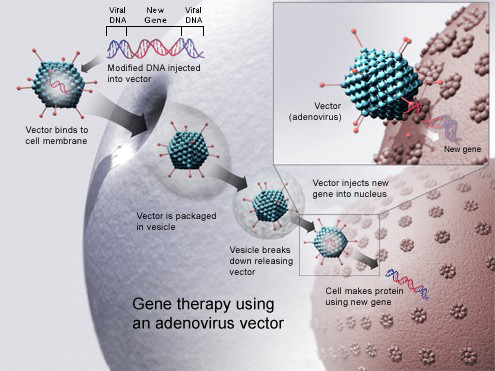The Coming Era of Gene Doping?
For the first time in Olympic history, the World Anti-Doping Agency — the international foundation charged with keeping performance-enhancing drugs out of professional sports — began testing athletes in Rio for evidence that they had tried to alter their genes to gain a competitive advantage. It’s something that officials have been anticipating for some time, and while there’s no real evidence that athletes are genetically modifying themselves to enhance speed, strength, or endurance, regulators are eager to get ahead of so-called gene doping — a problem that they see as inevitable in the age of genetic engineering.

In theory, gene doping would be similar to legitimate forms of gene therapy, in which scientists reprogram or introduce new genetic code to help patients suffering from diseases like cystic fibrosis or sickle cell anemia. Gene therapy often involves using some type of vector, like a virus, to safely infect a cell and deliver a strand of DNA carrying the desired trait. In genetic doping, however, the goal is to introduce a gene to improve athletic performance, like one, for example, that enhances erythropoietin, or EPO — a hormone that increases production of red blood cells and, in turn, expands oxygen availability in the blood.
Endurance athletes have long used injectable EPO cocktails (remember Lance Armstrong?), but WADA expects that athletes already can — or will soon be able to — tweak their genomes so that their body creates more of the hormone on its own.
Theodore Friedmann, a professor of pediatrics at the University of California, San Diego and chair of WADA’s Gene and Cell Doping Expert Group, said that while there is no universal way to detect gene doping, efforts to develop and fine-tune a reliable test are well underway. Such tests would hinge on the ability to detect an immune response to a virus or vector that’s needed to transport genes into cells, or by looking for changes in the genome itself. “A normal stretch of DNA in the body has sequences called introns between the genes that produce the EPO protein,” noted Eric Niller in Wired magazine last month. “But an artificial DNA sequence has all the genes right next to each other — no introns.”
Though the WADA Expert Group has been around since 2004, it has taken until now to develop tests considered ready for field trials. And while detecting subtle genetic cues is challenging, Friedmann suggested, it can be done. “Chances are likely that there will be some memory of something having been done,” he said. “You have to know what to look for, but it is not impossible.”
Aside from catching cheaters, officials say that discouraging gene doping is a fundamental safety issue. Conventional doping with pills and injections and even blood tranfusions, after all, has always presented a risk to the health of athletes — but at least those risks are knowable. Gene hacking, on the other hand, is still uncharted territory. Genes interact in complex ways, and it’s not always clear how changing one will affect others. This is another reason why EPO is a likely target for early gene dopers — it is associated with a single, fairly well-understood gene. Athletes who experiment with other parts of their genome would be playing a dangerous game, Friedmann suggested.
Still, not everyone is so sure this is a problem worth worrying over — at least not yet.
Michael Joyner, a researcher at the Mayo Clinic who focuses on exercise and athletics, agrees that genetic doping is possible. But he’s doubtful that it’s likely to happen anytime soon. Joyner said that he has been watching concerns about genetic doping since the 1970s, and has seen nothing come of it. In part that’s because even with recent advances, gene doping would still be prohibitively expensive for most athletes. Conventional steroids, in contrast, can be made cheaply in bathtubs — and that remains the real concern, Joyner suggested.
“If it were me, Joyner said, “I would spend a little less time [policing] gene doping and more on traditional doping.”










